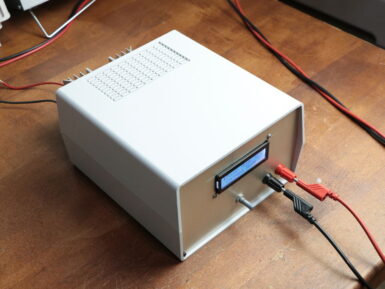
Overview
Based on the ESP8266 Wi-Fi transceiver module and the CH340 USB converter chip, this compact (Open Source) development and prototyping board is ideal for IoT applications.
The Wi-Fi module is compatible with the 802.11 b/g/n standard at 2.4 GHz, has an integrated TCP/IP stack, 19.5 dBm output power, data interface (UART / HSPI / I2C / I2S / Ir Remote Control GPIO / PWM) and PCB antenna.
It also has a micro USB connector and reset button. Programmable with Arduino IDE, it includes interpreters for processing commands for languages such as LUA.
Tech specs
- Model: ESP8266-12E
- Wireless Standard: 802.11 b/g/n
- Frequency range: 2.4 GHz - 2.5 GHz (2400M-2483.5M)
- Wi-Fi mode: Station / SoftAP / SoftAP+station
- Stack: Integrated TCP/IP
- Output power: 19.5dBm in 802.11b mode
- Data interface: UART / HSPI / I2C / I2S / Ir
- Remote Control GPIO / PWM
- Supports protection mode: WPA / WPA2
- Encryption: WEP / TKIP / AES
- Power supply: from 4.5 VDC to 9 VDC (VIN) or via micro USB connector
- Consumption: with continuous Wi-Fi transmission about 70 mA (200 mA MAX) - in standby < 200µA
- Operating temperature: from -40°C to +125°C
- Dimensions (mm): 58×31.20×13
- Weight: 10 grams
Conformities
Get Inspired

Another Slot Car Lap Counter, but if I did it anyone can do!

If you need a device which draws a certain amount of current and power for testing, then GreatScott! has just the solution. His project uses an Arduino Nano, along with a separate IC and a voltage divider, to measure both current and voltage input from the power source. It then employs this data to properly adjust a MOSFET, dissipating the correct amount of voltage and power as required. Interface is handled via a rotary encoder and a 16x2 I2C LCD display, and the electronics are housed in a solid-looking enclosure. As seen in the video below, the adjustable constant load features an impressively large heat sink, needed to take care of the 30V and 20A that the setup is capable of drawing.






